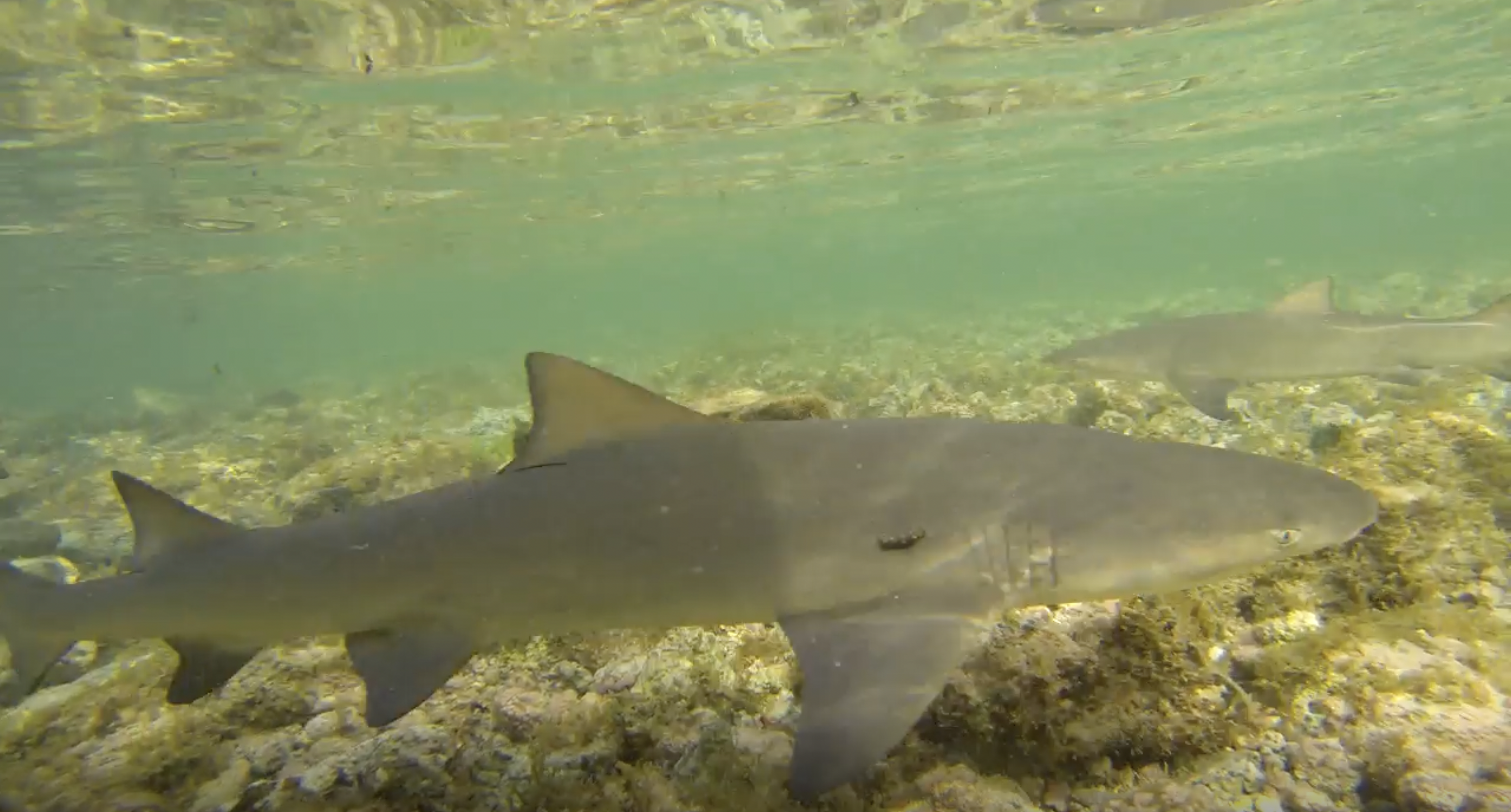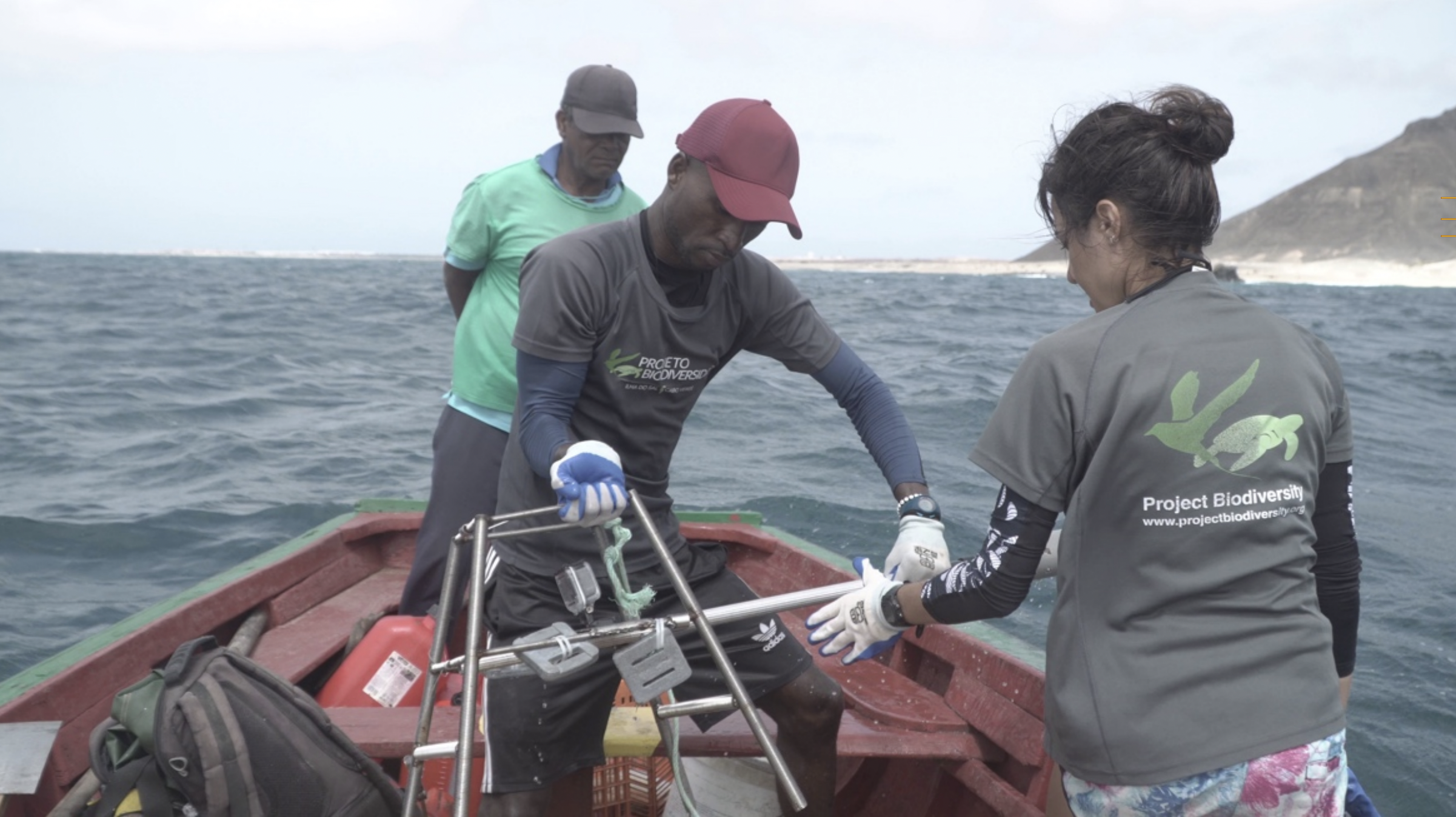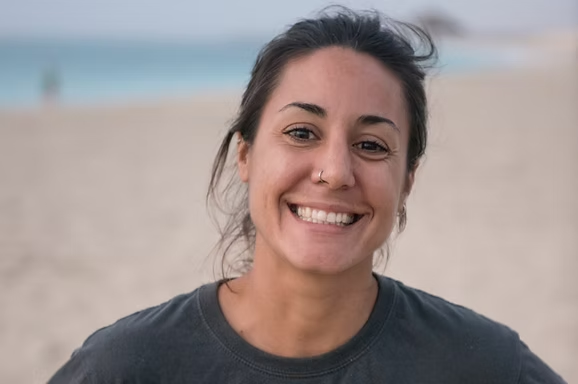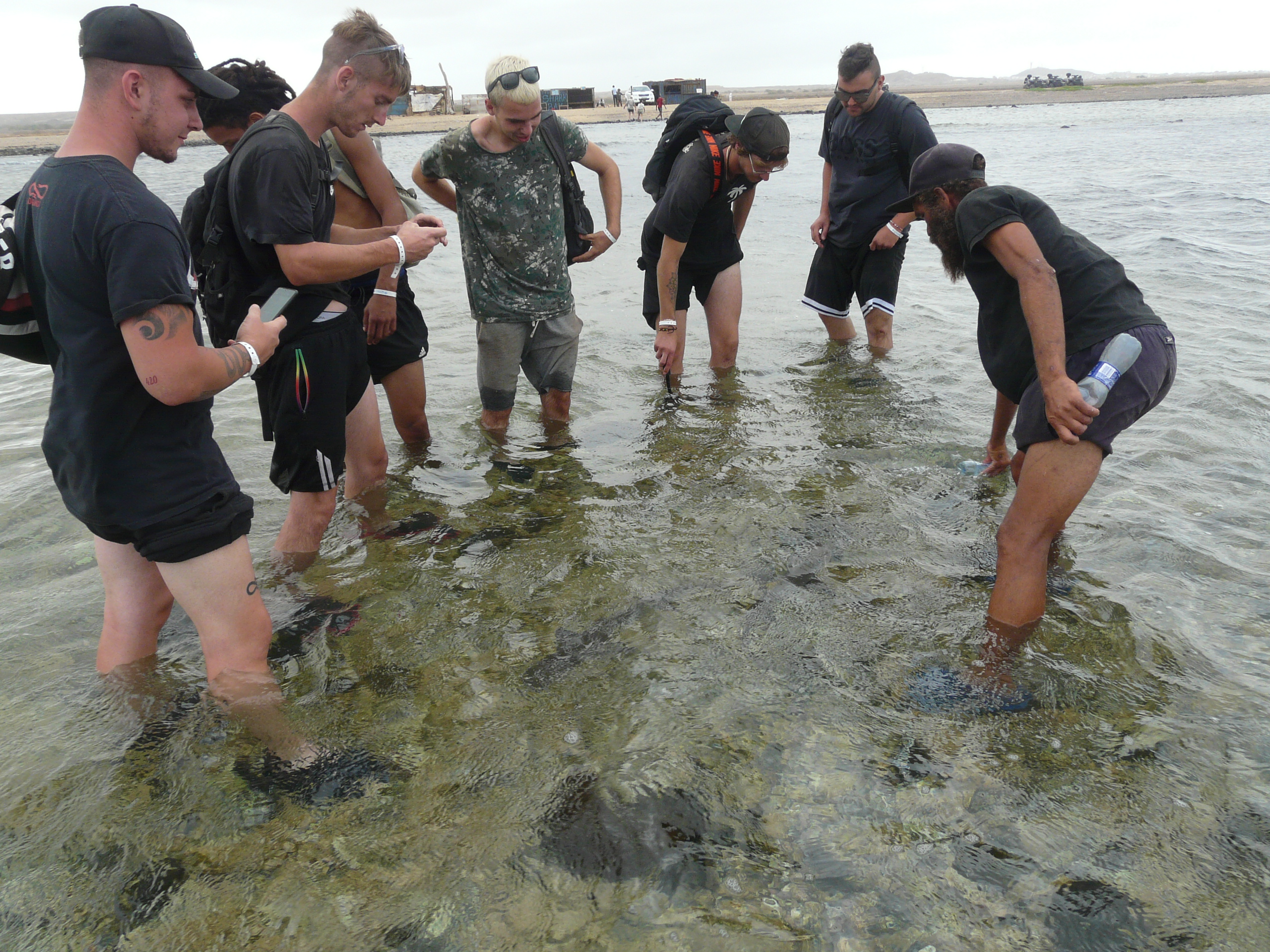
Interview with Berta, Coordinator of the Marine Monitoring Program at Projeto Biodiversidade
Published on 26 September 2025Berta, Can you first set the scene in Cape Verde and tell us the history of your project?
Our PPI project focused on a very specific area called Parda, on the northeast coast of Sal Island, Cabo Verde, which is believed to be a nursery for lemon sharks (Negaprion brevirostris). It’s also one of the main tourist attractions of the island, with hundreds of visitors coming daily to see the sharks up close. However, when we submitted our proposal to the PPI, there were no regulations in place: Working conditions for workers and visitor infrastructure were inadequate, and no code of conduct existed to protect the sharks or their habitat.
We recognized an urgent need to take action. Shark tourism was expanding without clear guidelines, and very little was known about the species in the area. Our goal was never to stop tourism, but to structure it so that both the local community and the sharks could thrive together.
The project was built on three main pillars:
1) Scientific research – Gathering data to confirm the nursery status and support the creation of a Marine Protected Area (MPA). We used several methods such as BRUV (Baited Remote Underwater Video (BRUV) is a non-invasive method that uses an underwater camera paired with inaccessible bait to attract sharks by scent. The camera records for 60–90 minutes, enabling us to assess species diversity, distribution, and behavior without disturbing the animals), drone surveillance, eDNA analysis, tagging, and DNA sampling.

Marine team preparing a BRUV to be placed in the Marine Protected Area of Serra Negra. Credit: Projeto Biodiversidade 2023 report.
2) Community empowerment – Support local workers in formalizing their businesses, improving working conditions, and organizing to represent their interests collectively.
3) Sustainability and best practices – Increase their knowledge of shark ecology and biology, co-develop a voluntary code of conduct for shark-watching activities, define designated water entry points, and create information panels to help minimize the negative impact on both sharks and their habitat while improving the visitor’s experience.
Berta, as the coordinator, what exactly is your role? And as a shark specialist, what’s your perspective on them?
My role? Pretty much… everything! From designing the project to ensuring fieldwork, logistics, financial management, reporting… I coordinate a team of three to four people, and when we conduct tagging missions, we get the assistants of many volunteers, most of them locals.
Before this, I had never worked with sharks. Now, I learn something from them every single day—they are truly amazing creatures. Parda is a special spot because you can enter the water by foot and be surrounded by curious, unaggressive juvenile lemon sharks. It challenges the stereotype that sharks are dangerous. Conflicts with humans usually happen because we interfere with their environment. Sadly, millions of sharks are killed every year by human activity… We need to understand them better in order to protect them.

With PPI 6 coming to an end, how did they help and what are the main results?
This project would not have been possible without PPI’s support. We also received valuable assistance from the Shark Conservation Fund for specific activities, as well as from Queen Mary University of London for drone video analysis. We also built strong partnerships with the environmental and the tourism authorities among others, all of which have been essential to the project’s success. Above all, our greatest ally has been the Association of Workers of Shark Bay (ATSB – Associação de Trabalhadores de Shark Bay), whose members play a pivotal on-the-ground role in ensuring the sustainability of shark-watching while safeguarding the well-being of lemon sharks in this critical habitat.
Key achievements include:
1) Scientific confirmation that Parda is indeed a lemon shark nursery (unpublished data), and the recognition of the area as a ISRA (Important Shark and Ray Area).
2) Proposal for the creation of a MPA in the area submitted to the government.
3) Support the creation of a workers’ association: previously, workers at Parda worked independently, but now they share a collective voice and an organized structure that is recognized and respected by other stakeholders.
4) Adoption of a voluntary code of conduct by shark-watching guides.
We also collaborate with other NGOs in Cabo Verde, sharing information, techniques, and lessons learned—while adapting to each island’s context. In Sal, which hosts 50% of the country’s tourism, well-managed and regulated shark-watching offers a sustainable alternative to protecting shark species compared to killing them for consumption and trade.
You spend a lot of time watching shark behavior on video and on the field. What have you learned?
I’ve seen that lemon sharks at Parda have two faces. During the day, they know the tourist schedule: at 9:30 a.m., when the first buses arrive, they show up; at 5 p.m., when the last groups leave, they disappear. Around tourists, they behave like curious cats, brushing past your legs. But at night, everything changes—they become fast, efficient hunters.
This is actually reassuring: despite tourism, their natural instincts remain intact.

A group of tourists watching lemon sharks. Capo Verde, 2022. Credit : Paul Estève.
Click HERE to know more about Projecto Biodiversidade’s work on sharks !